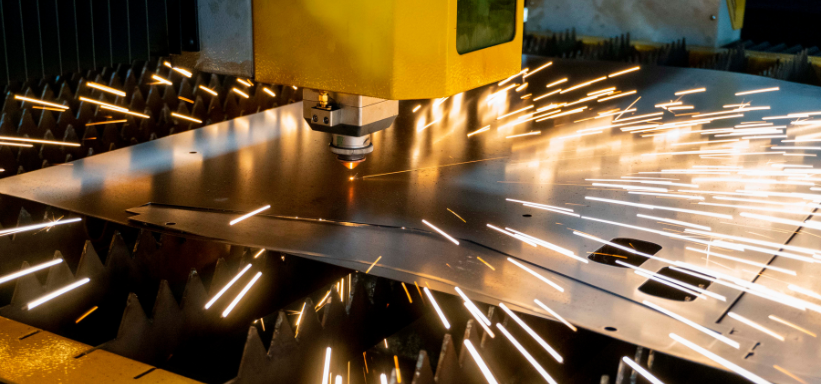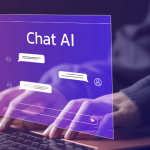Executive Summary
-
Explore how AI-driven automation is transforming manufacturing processes, boosting efficiency and productivity.
-
Understand the benefits and challenges of implementing AI solutions in manufacturing.
-
Learn from real-world case studies illustrating successful AI adoption in the industry.
-
Discover expert tips for integrating AI into existing manufacturing frameworks.
-
Gain access to resources and tools to facilitate the transition to AI-enhanced manufacturing.
Introduction
In today’s fast-paced industrial landscape, manufacturers are under constant pressure to improve efficiency, reduce costs, and maintain a competitive edge. The integration of Artificial Intelligence (AI) in manufacturing processes is increasingly seen as a critical strategy to achieve these goals. This article delves into the transformative role of AI in manufacturing, highlighting its potential to revolutionize operations and redefine industry standards. By the end of this read, you’ll gain insights into how AI-driven automation can optimize efficiency and productivity in your manufacturing processes.
Definitions / Context
AI-Driven Automation refers to the use of artificial intelligence technologies to automate manufacturing processes, thereby reducing manual intervention and increasing operational efficiency.
Efficiency in Manufacturing is the ability to produce goods using the least amount of resources and time while minimizing waste and maximizing output quality.
Benefits / Pros
-
Increased Production Speed: AI systems can operate continuously without the need for breaks, significantly increasing production rates.
-
Enhanced Quality Control: AI can detect defects and inconsistencies at a microscopic level, ensuring higher quality outputs.
-
Cost Reduction: Reducing the reliance on human labor and minimizing errors can lead to significant cost savings.
-
Predictive Maintenance: AI algorithms can predict equipment failures before they occur, reducing downtime and maintenance costs.
-
Supply Chain Optimization: AI can analyze vast amounts of data to optimize supply chain operations, reducing lead times and improving delivery accuracy.
Risks / Cons / Challenges
-
High Initial Costs: The upfront investment for AI technology and infrastructure can be substantial.
-
Data Privacy Concerns: Handling large amounts of sensitive data requires robust cybersecurity measures.
-
Skill Gap: There is a need for specialized skills to manage and operate AI systems effectively.
-
Integration Challenges: Legacy systems may pose challenges to integrating new AI technologies seamlessly.
How to Integrate AI in Manufacturing
-
Conduct a Needs Assessment: Identify the areas where AI can offer the most benefit.
-
Develop a Strategic Plan: Outline objectives, budget, and timeline for AI implementation.
-
Choose the Right AI Tools: Select appropriate AI technologies tailored to your manufacturing needs.
-
Pilot the Solution: Test the AI system in a controlled environment to evaluate its effectiveness.
-
Train Staff: Upskill employees to work alongside AI systems efficiently.
-
Evaluate and Iterate: Continuously measure performance and make necessary adjustments.
XYZ Manufacturing, a leading automotive parts producer, successfully integrated AI-driven automation into its assembly line, resulting in a 30% increase in production speed and a 20% reduction in operational costs. By employing AI-powered predictive maintenance, XYZ Manufacturing also reduced equipment downtime by 40%, enhancing overall efficiency.
Case Study: Transformation at XYZ Manufacturing
Expert Tips / Strategic Insights
-
Start Small: Begin with pilot projects to understand the nuances of AI integration before scaling.
-
Focus on Data Quality: High-quality data is crucial for AI systems to function optimally.
-
Collaborate with AI Specialists: Partner with AI experts to ensure successful implementation and management.
-
Stay Updated: Keep abreast of the latest AI trends and technologies to remain competitive.
Tools / Resources / Calculators
-
AI Readiness Checklist: Evaluate your organization’s preparedness for AI adoption.
-
ROI Calculator for AI Investments: Estimate the financial benefits of implementing AI in your manufacturing processes.
-
Industry Reports: Access the latest insights and trends in AI-driven manufacturing from leading industry publications.
Conclusion
AI-driven automation is not just the future of manufacturing; it’s the present reality that offers substantial benefits in terms of efficiency, quality, and cost savings. By understanding the potential and challenges, manufacturers can strategically integrate AI to transform their operations and maintain a competitive edge. For tailored AI implementation strategies, consider consulting with our experts.






















